Citroen C3 vs Hyundai i10 – Prestanda, räckvidd & förbrukning jämfört
Båda modellerna har sina styrkor – men vilken passar dig bättre?
Jämför prestanda, förbrukning, pris och utrymme direkt: Citroen C3 eller Hyundai i10?
When it comes to choosing a compact car that blends style, efficiency, and innovative features, the Citroën C3 and Hyundai i10 stand out. Both vehicles cater to urban drivers looking for practical and fun options. In this article, we will dive deep into their technical specifications, innovations, and overall performance to help you make an informed decision.
Design and Body Type
The Citroën C3 adopts an SUV-inspired design, providing a higher seating position and a robust aesthetic. With dimensions measuring 4015 mm in length and a width of 1755 mm, it offers a spacious feel. The inclusion of five doors and a trunk capacity of 310 liters makes it both practical and stylish.
On the other hand, the Hyundai i10 is a compact hatchback that excels in urban maneuverability. Measuring between 3670 mm to 3675 mm in length and 1680 mm in width, it lives up to its reputation for being a city car. Also, it features a trunk capacity of 252 liters, which is adequate for daily errands and short trips.
Engine and Transmission
The Citroën C3 offers a variety of engine options including petrol, electric, and mild hybrid engines, catering to diverse user preferences. The petrol engine delivers power ranging from 101 to 113 HP, and it comes with multiple transmission choices such as manual, automatic, and dual-clutch automatic systems. With a torque of 205 Nm, the C3 ensures a lively driving experience.
In contrast, the Hyundai i10 primarily focuses on petrol engines, providing power outputs of 63 to 90 HP. It features both manual and automated manual transmission options. The i10’s torque varies from 93 to 172 Nm, depending on the engine version, allowing for easy city driving and agility around tight corners.
Efficiency and Performance
When it comes to fuel consumption, the Citroën C3 excels with figures ranging from 5.5 to 5.6 L/100km for petrol engines, with an impressive electric range of 320 to 326 km for electric versions. It also showcases low CO2 emissions, particularly in its electric variant.
The Hyundai i10 is equally commendable with fuel consumption ratings from 4.9 to 5.4 L/100km, making it a very economical choice for city dwellers. It has a CO2 efficiency class that can be as low as 111 g/km, ensuring that environmentally conscious buyers have a solid option.
Acceleration and Top Speed
The performance metrics of the Citroën C3 show that it can accelerate from 0 to 100 km/h in as little as 9.9 seconds, showcasing its sporty demeanor. With a maximum speed of 183 km/h, it’s more than capable of handling both city and highway driving.
The Hyundai i10, while not as fast, boasts respectable performance figures with acceleration from 0 to 100 km/h in just 11.4 to 15.9 seconds, depending on the variant. The top speed reaches 175 km/h, which is quite favorable for a compact hatchback.
Innovative Features
Innovation plays a crucial role in both models. The Citroën C3 incorporates various smart technology features, including advanced connectivity options and driver assistance systems aimed at enhancing safety and convenience. Depending on the trim, it can offer features like a panoramic sunroof, touchscreen infotainment, and a surround view monitoring system.
The Hyundai i10 also includes a range of smart technologies such as a large touchscreen display, smartphone integration, and safety features that make it a good value proposition. It also boasts an enhanced audio system, providing an enjoyable driving experience for both the driver and passengers.
Final Thoughts
Ultimately, both the Citroën C3 and Hyundai i10 present unique benefits tailored to different consumer needs. The C3 is an SUV-like compact that combines spaciousness with innovative engine options, while the i10 excels in urban efficiency and maneuverability. Choosing between the two will largely depend on personal preferences regarding design, performance, and functional requirements.
Whether you prioritize practicality in city driving or seek a sporty hatchback feel, both of these models have something to offer. As you weigh your options, consider your driving habits and lifestyle to find the best match for your automotive needs.
Nu blir det konkret: de tekniska skillnaderna i detalj
Kostnader och förbrukning: När det gäller ekonomi visar bilarna intressanta skillnader.
Citroen C3 har ett minimal prisförsprång – den börjar på 184800 kr, medan Hyundai i10 kostar 196300 kr. Skillnaden är ungefär 11555 kr.
Även bränsleförbrukningen visar skillnader: Hyundai i10 klarar sig med 4.90 L och är därmed lätt snålare än Citroen C3, som drar 5 L. Skillnaden är ungefär 0.10 L per 100 km.
Motor och prestanda: Effekt, vridmoment och acceleration säger mycket om hur bilen upplevs i vardagen. Här ser man vem som erbjuder mest dynamik.
När det gäller motoreffekt har Citroen C3 ett klart synligt övertag – 113 hk mot 90 hk. Det motsvarar ungefär 23 hk hk mer.
I accelerationen från 0 till 100 km/h är Citroen C3 en aning snabbare – 9.90 s mot 11.40 s. Det är ungefär 1.50 s snabbare.
När det gäller toppfart ligger Citroen C3 nästan omärklig före – den når 183 km/h, medan Hyundai i10 stannar vid 175 km/h. Skillnaden är omkring 8 km/h.
Även vridmomentet skiljer sig åt: Citroen C3 drar något kraftigare med 205 Nm mot 172 Nm. Skillnaden är cirka 33 Nm.
Utrymme och praktisk användning: Utöver prestanda handlar det i vardagen om komfort och användbarhet. Här avgörs vilken bil som är mest praktisk.
Båda bilarna har plats för 5 personer.
När det gäller tjänstevikt är Hyundai i10 tydligt lättare – 996 kg mot 1226 kg. Skillnaden är omkring 230 kg.
När det gäller bagageutrymme erbjuder Citroen C3 något mer plats – 310 L mot 252 L. Skillnaden är omkring 58 L.
Vid maximal lastvolym presterar Citroen C3 i liten grad bättre – upp till 1220 L, cirka 170 L mer än Hyundai i10.
Den maximala lastkapaciteten är densamma – båda kan lasta upp till 423 kg.
Vårt omdöme: Citroen C3 visar sig vara ger konkurrenten små chanser och blir därmed vår DriveDuel Champion!
I den här jämförelsen är Citroen C3 den mer kompletta allroundbilen.
Citroen C3
Citroën C3 kombinerar stil och komfort på ett imponerande sätt, vilket gör den till ett utmärkt val för stadskörning. Med sin distinkta design och rymliga interiör erbjuder C3 en unik körupplevelse, oavsett om du pendlar eller ger dig ut på äventyr. Dess intuitiva teknik och hållbara bränslealternativ bidrar också till att göra den till en populär bil för både unga och äldre förare.
detaljer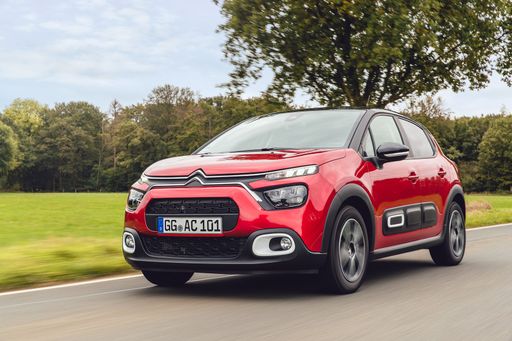 @ media.stellantis.com
@ media.stellantis.com
 @ media.stellantis.com
@ media.stellantis.com
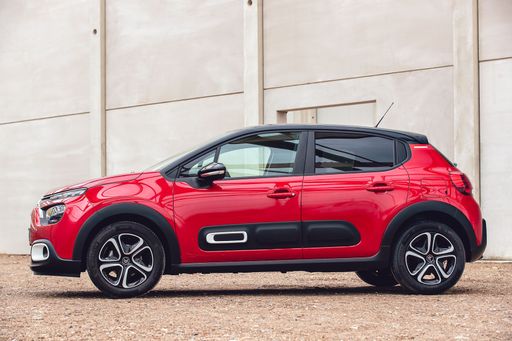 @ media.stellantis.com
@ media.stellantis.com
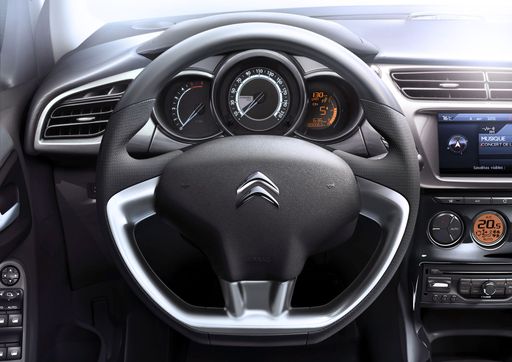 @ media.stellantis.com
@ media.stellantis.com
Hyundai i10
Hyundai i10 är en kompakt bil som imponerar med sin smidighet och stilrena design. Den erbjuder en bekväm körupplevelse och är perfekt för både stadskörning och längre utflykter. Med sitt smarta utrymmesutnyttjande är i10 ett utmärkt val för den moderna bilföraren.
detaljer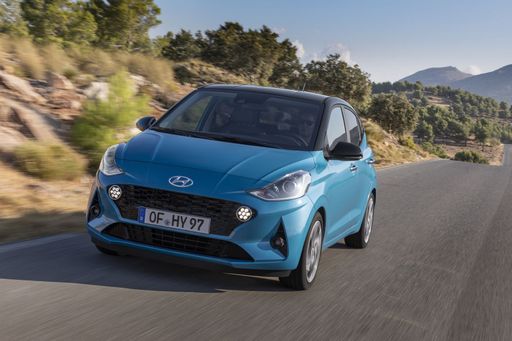 @ hyundai.news
@ hyundai.news
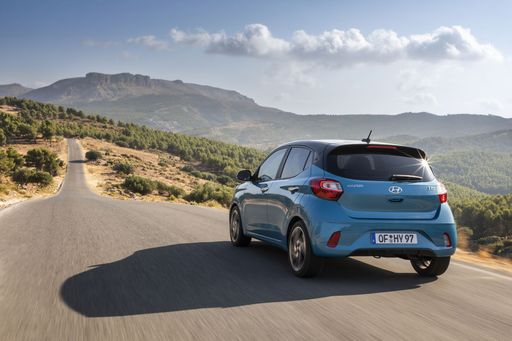 @ hyundai.news
@ hyundai.news
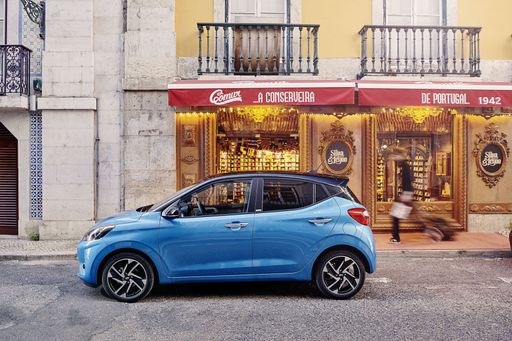 @ hyundai.news
@ hyundai.news
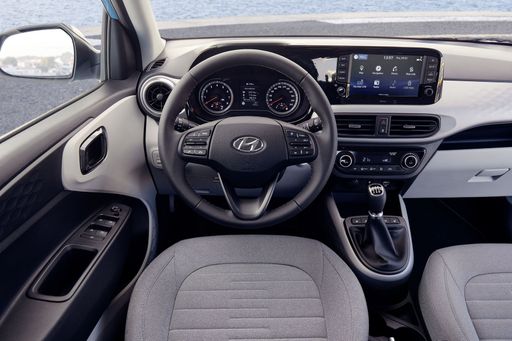 @ hyundai.news
@ hyundai.news
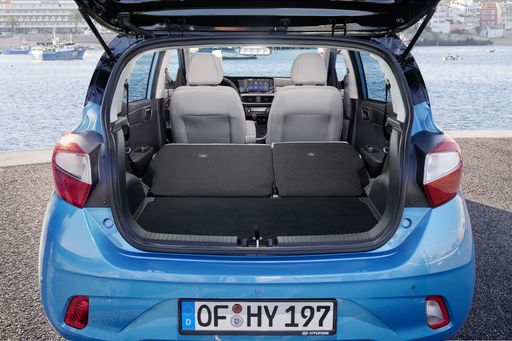 @ hyundai.news
@ hyundai.news

|

|
|
|
|
Kostnader och förbrukning |
|
|---|---|
|
Pris
184800 - 321200 kr
|
Pris
196300 - 256400 kr
|
|
Förbrukning L/100 km
5 - 5.6 L
|
Förbrukning L/100 km
4.9 - 5.5 L
|
|
Förbrukning kWh/100 km
16.6 - 17.2 kWh
|
Förbrukning kWh/100 km
-
|
|
Elektrisk räckvidd
206 - 324 km
|
Elektrisk räckvidd
-
|
|
Batterikapacitet
-
|
Batterikapacitet
-
|
|
CO2
0 - 126 g/km
|
CO2
110 - 124 g/km
|
|
Tankvolym
44 L
|
Tankvolym
36 L
|
Mått och kaross |
|
|---|---|
|
Karosstyp
SUV
|
Karosstyp
Halvkombi
|
|
Säten
2 - 5
|
Säten
4 - 5
|
|
Dörrar
5
|
Dörrar
5
|
|
Tjänstevikt
1226 - 1518 kg
|
Tjänstevikt
996 - 1099 kg
|
|
Bagageutrymme
310 L
|
Bagageutrymme
252 L
|
|
Längd
4015 mm
|
Längd
3670 - 3675 mm
|
|
Bredd
1755 mm
|
Bredd
1680 mm
|
|
Höjd
1567 mm
|
Höjd
1480 - 1483 mm
|
|
Max bagageutrymme
1220 L
|
Max bagageutrymme
1050 L
|
|
Lastkapacitet
227 - 423 kg
|
Lastkapacitet
344 - 423 kg
|
Motor och prestanda |
|
|---|---|
|
Motortyp
Bensin, El, Bensin Mildhybrid
|
Motortyp
Bensin
|
|
Växellåda
Manuel, Automatisk
|
Växellåda
Manuel, Automatisk
|
|
Växellådsdetalj
Manuell växellåda, Reduktionsväxellåda, Automatisk dubbelkoppling
|
Växellådsdetalj
Manuell växellåda, Automatiserad manuell
|
|
Drivtyp
Framhjulsdrift
|
Drivtyp
Framhjulsdrift
|
|
Effekt (hk)
101 - 113 hk
|
Effekt (hk)
63 - 90 hk
|
|
Acceleration 0-100 km/h
9.9 - 12 s
|
Acceleration 0-100 km/h
11.4 - 18.4 s
|
|
Maxhastighet
125 - 183 km/h
|
Maxhastighet
143 - 175 km/h
|
|
Vridmoment
120 - 205 Nm
|
Vridmoment
93 - 172 Nm
|
|
Antal cylindrar
3
|
Antal cylindrar
3 - 4
|
|
Effekt (kW)
74 - 83 kW
|
Effekt (kW)
46 - 66 kW
|
|
Motorvolym
1199 cm3
|
Motorvolym
998 - 1197 cm3
|
Allmänt |
|
|---|---|
|
Modellår
2024 - 2025
|
Modellår
2024
|
|
CO2-effektivitetsklass
D, A, C
|
CO2-effektivitetsklass
C, D
|
|
Märke
Citroen
|
Märke
Hyundai
|
Vilka drivlinor finns för Citroen C3?
Modellen erbjuds med Framhjulsdrift.
De visade priserna och uppgifterna är uppskattningar baserade på tyska listpriser och kan variera beroende på land. Denna information är inte juridiskt bindande.
